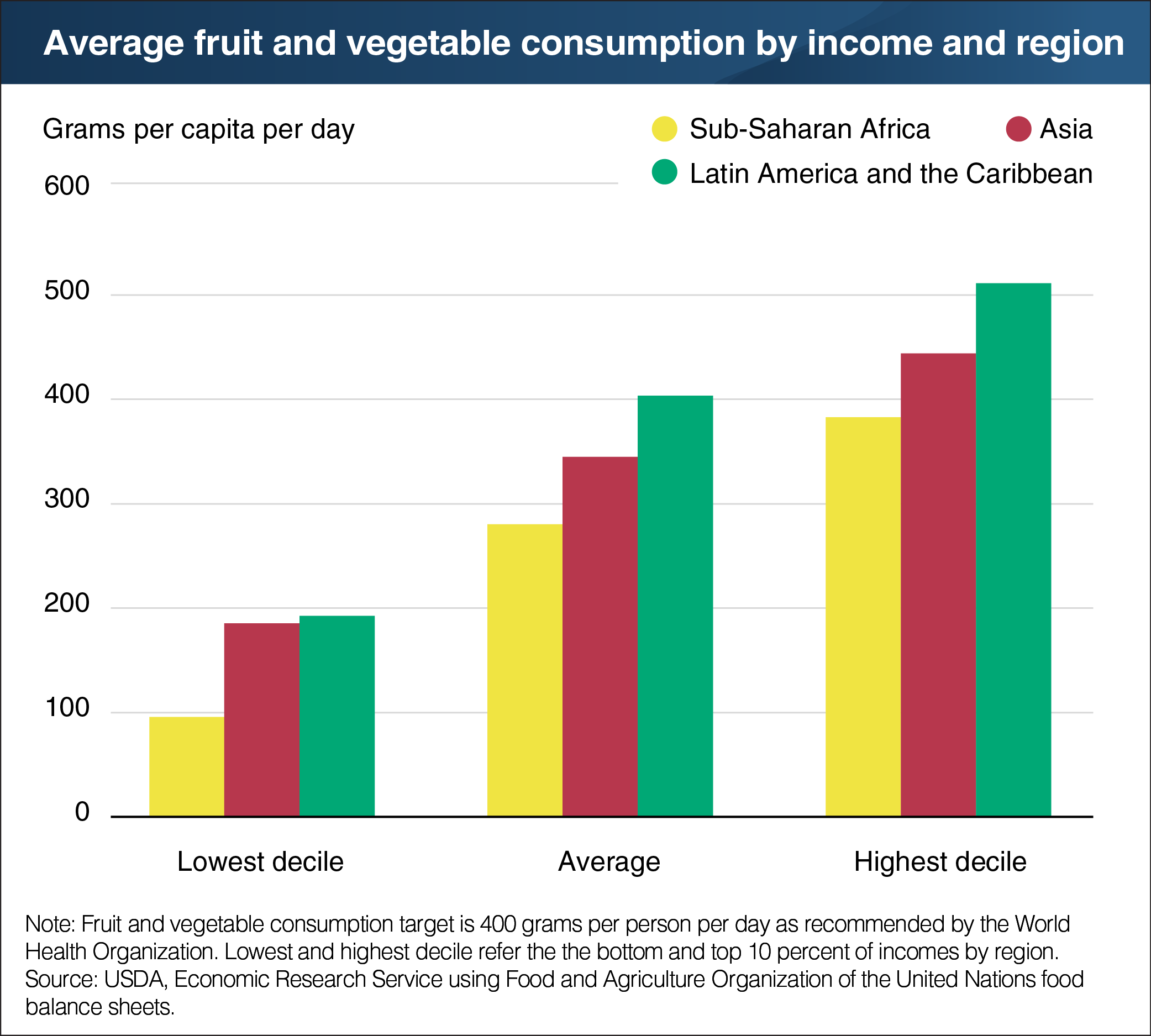Fruit and vegetable consumption falls short for many in the developing world
- by Karen Thome and Birgit Meade
- 12/20/2017

While food insecurity—measured as not having access to at least 2,100 calories per day—has declined across all regions of the world, challenges remain. Food insecurity is still prevalent in parts of Sub-Saharan Africa, Asia, and Latin America and the Caribbean. A key component of food security is access to fruits and vegetables, which are rich in essential nutrients. Latin America and the Caribbean has the highest fruit and vegetable intake level, being the only region with average consumption reaching the World Health Organization’s recommendation of 400 grams per capita of fruit and vegetable consumption per day. Sub-Saharan Africa falls short of the threshold for all income groups, and in Asia, only the highest income consumers are currently exceeding the target. Among the lowest income individuals across regions, however, consumers are especially sensitive to prices and are prone to rely on cheaper staple foods like grains over more expensive foods including fruits and vegetables. Globally, food security is projected to continue to improve as more developing nations grow economically, ultimately leading to increased fruit and vegetable consumption. This chart appears in the ERS Amber Waves feature, "International Food Security Assessment, 2017-27," released in July 2017.

